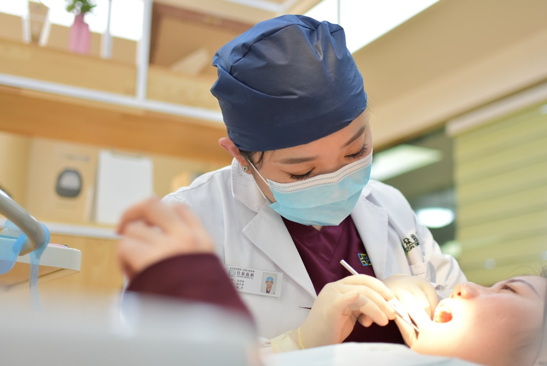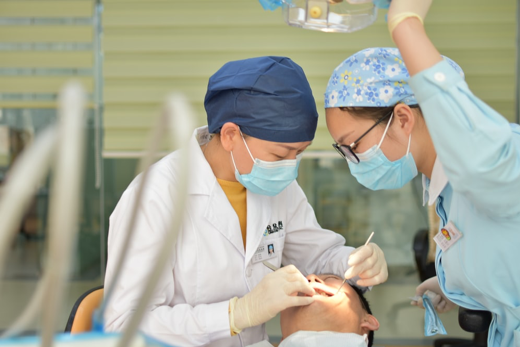When a dentist recommends the removal of your wisdom tooth, they will refer you to an oral surgeon. The surgeon will perform the removal procedure in their office. After the procedure, you will feel experience some pain. However, you will recover within a few days.
What is Wisdom Tooth Removal
Wisdom tooth removal or extraction is a procedure in which a surgeon removes your wisdom teeth. These are the permanent teeth that you grow after adulthood. An adult develops four wisdom teeth in the corner of your mouth.

(Source)
The development of wisdom teeth can be painful, depending on your condition. When your wisdom teeth are unable to grow because of less room, you experience a sharp sensation. The condition can also cause various dental problems. The solution to treat this condition is the removal of wisdom teeth. Mostly, an oral surgeon will perform this procedure to remove your teeth. However, a dentist can also extract the tooth. In some cases, dentists recommend the removal of these teeth even if they do not cause any problems. So, it is essential to visit a dentist as soon as you notice the growth of these impacted teeth.
Reason to Undergo Tooth Removal
Here are some conditions in which a dentist will advise you to remove a wisdom tooth:
- Growth of the tooth towards other teeth
- When the teeth grow at a right angle
- Growth at an angle that it moves out of the alignment at the back of your mouth
- When the teeth trap in the jawbone
Procedure for Wisdom Tooth Removal
Below, you will find the steps for wisdom tooth removal:
1. Anesthesia
When you arrive at the dentist for your procedure, they will inject local anesthesia to reduce pain during the process. Because local anesthesia will numb the surrounding area of your teeth, you will not feel anything during the procedure. If you feel anxious or stress before the procedure, you can discuss your condition with the dentist. They will provide sedatives to calm you down, which they will inject into your arm.
Doctors will use general anesthesia only in rare cases. Some hospitals will use it before the procedure to keep you relaxed. No matter, what your dentist uses to numb the area, you will return home soon after the procedure.
2. Removal of Wisdom Tooth
The dentist will make a small incision on the gum when the tooth is still inside the gum. This way they can get access to it. Subsequently, they will break the bone covering the teeth. Breaking the top of the tooth will make the extraction process simple. They will also cut the tooth in small parts through the opening. However, in some cases, the impacted teeth break through the gum. In this situation, there would be no need to make an incision.
You will feel some pressure when the dentist will increase the size of the tooth socket. A larger tooth socket will cause the tooth to rock back and forth. Tooth removal is not a painful process because local anesthesia will numb the surrounding area. If you feel pain at any point during the procedure, you can inform the dentist. In turn, they can give you more doses of local anesthesia. The duration of tooth removal varies depending on the strength of your tooth. If the process is complicated, extraction will take 20 minutes or longer. However, a simple tooth extraction will only take few minutes.

(Source)
After Surgery
The dentist might cut open the gum to access the tooth. In that case, they will use dissolving stitches to seal the opening. Usually, it takes seven to ten days for the stitches to dissolve. However, confirm the duration with the doctor as the time may vary.
The dentist will also place gauze to form blood clots in the empty space. It will take almost an hour for blood to clot in the area. During this time, they will advise you to keep pressure on the socket to boost the process. Blood clotting will work as a healing process; therefore, you need to be extra careful. The dentist will also prescribe antibiotics to prevent an infection in the socket.
You have to avoid the following activities for 24 hours after removal of the tooth:
- Consuming alcohol and smoking
- Drinking hot fluids
- Rinsing your mouth
- Demanding physical activities
Conclusion
There would be no need for follow-ups if your stitches are dissolvable or do not develop any complications. The complication or persistent problems that you need to look for includes swelling, pain, bleeding, or numbness. You need to immediately visit the dentist if you notice any of these complications, as they might indicate nerve damage, infection, and other problems.
At Ideal Smiles, we provide all the dental treatment with care. Professional dentists at our clinic will treat your dental condition with the latest tools and techniques. We aim to provide healthy teeth and bring a beautiful smile with deep dental cleaning and tooth alignment. So schedule a consultation with our dentist today.
Contact us at 718-535-1196 to schedule an appointment with one of our dental experts.
